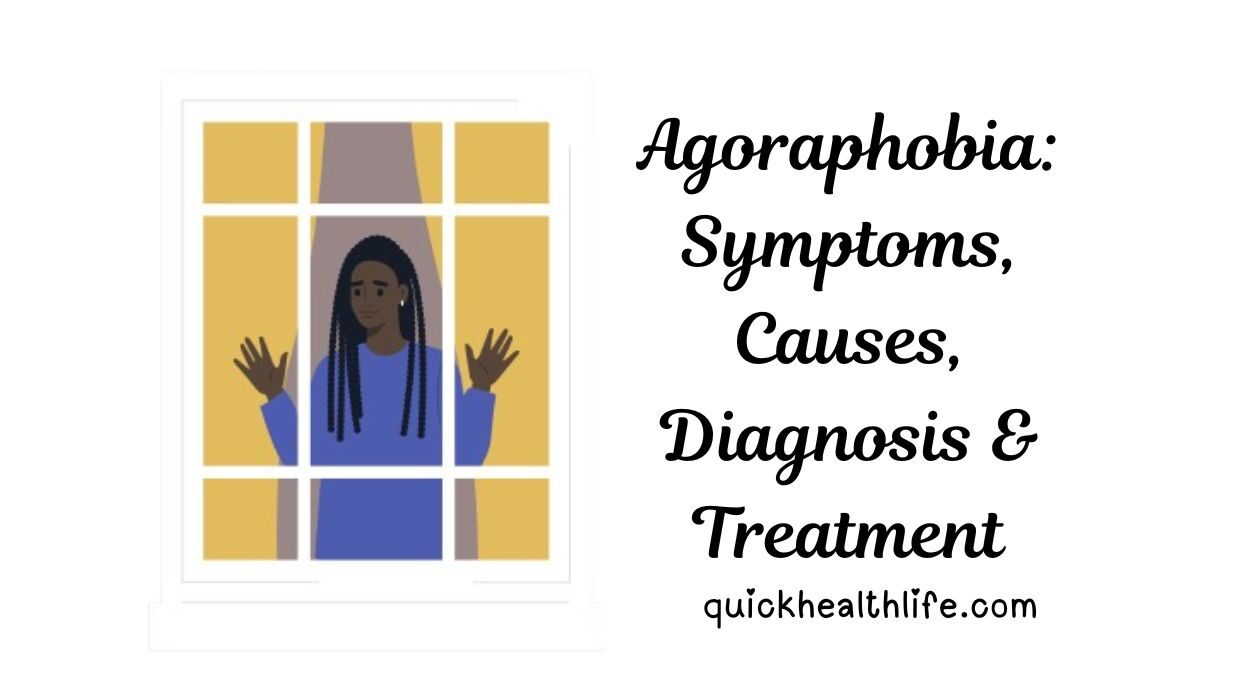What is Agoraphobia?
Agoraphobia is an anxiety disorder where a person fears being in situations or places where escape might be difficult. People with agoraphobia often avoid crowded areas, public transport, or even leaving home. Unlike general anxiety, it specifically relates to fear of open spaces or situations where help may not be available.
Who is at Risk?
Risk factors include:
- Family history of anxiety or panic disorders.
- Stressful life events (e.g., trauma, abuse, accidents).
- Existing panic disorder.
- Long-term medical conditions that limit mobility.
Table of Contents
Symptoms – Agoraphobia
Common Emotional Symptoms
- Intense fear of being alone outside.
- Anxiety about crowded areas.
- Fear of losing control in public.
- Anticipatory anxiety before leaving home.
Physical Symptoms of Agoraphobia
- Rapid heartbeat.
- Sweating and trembling.
- Shortness of breath.
- Chest pain or dizziness.
- Nausea or stomach upset.
Behavioral Symptoms
- Avoiding travel on buses, trains, or flights.
- Refusing to go shopping or attend events.
- Staying home for long periods.
- Relying on a companion to go outside.
Causes – Agoraphobia
Genetic Factors
Studies show that genetics play a role. If a parent or sibling has an anxiety disorder, the chances of developing agoraphobia increase.
Environmental Triggers
- Childhood trauma.
- Overprotective parenting.
- Stressful life transitions (e.g., divorce, loss of a loved one).
Psychological Conditions Linked to Agoraphobia
- Panic disorder.
- Depression.
- Social anxiety disorder.
- Post-traumatic stress disorder (PTSD).
Diagnosis – Agoraphobia
Clinical Evaluation
Doctors usually begin with a detailed interview to understand symptoms, personal history, and possible triggers.
Diagnostic Criteria (DSM-5)
Agoraphobia is diagnosed if a person experiences:
- Fear in at least two or more situations (public transport, open spaces, enclosed spaces, standing in line, or being outside alone).
- Persistent fear lasting six months or more.
- Avoidance that significantly impacts daily life.
Differential Diagnosis
Agoraphobia can sometimes be confused with:
- Social anxiety disorder.
- Specific phobias.
- Generalized anxiety disorder (GAD).
Treatment – Agoraphobia
Psychotherapy Options
- Cognitive Behavioral Therapy (CBT): Helps change negative thought patterns.
- Exposure Therapy: Gradual exposure to feared situations to reduce anxiety.
- Group Therapy: Provides support and reduces feelings of isolation.
Medications Used
- Antidepressants (SSRIs, SNRIs): Reduce anxiety and panic attacks.
- Anti-anxiety medications (benzodiazepines): Short-term relief.
- Beta-blockers: Help control physical symptoms like rapid heartbeat.
Lifestyle Changes & Coping Strategies
- Regular exercise.
- Breathing and relaxation techniques.
- Building a daily routine.
- Joining a support group.
Complications of Untreated Agoraphobia
- Complete social isolation.
- Increased risk of depression and substance abuse.
- Inability to work or study.
- Strain on personal relationships.
Living with Agoraphobia
- Encourage gradual exposure to safe environments.
- Practice mindfulness and meditation.
- Seek professional help early.
- Families should provide emotional support without being overprotective.



